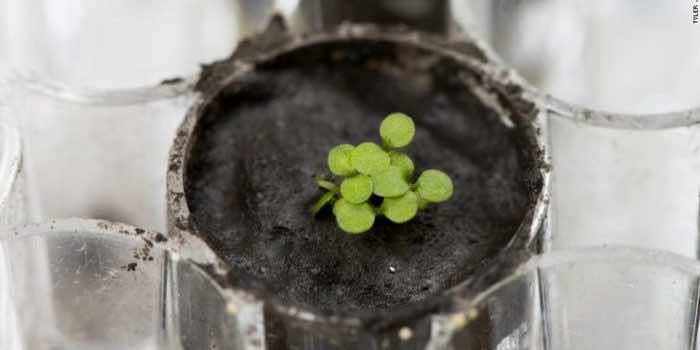Scientists have grown plants in lunar soil for the first time by using samples collected during the Apollo missions to the moon.
The study published Thursday in the journal Communications Biology shows how difficult it is for plants to grow in such conditions.
“Plants helped establish that the soil samples brought back from the moon did not harbor pathogens or other unknown components that would harm terrestrial life, but those plants were only dusted with the lunar regolith and were never actually grown in it,” said study co-author Anna-Lisa Paul, research professor of horticultural sciences at the University of Florida Institute of Food and Agricultural Sciences.

The research team requested 4 grams of lunar material collected during the Apollo 17 mission from NASA. The scientists filled each well with a gram of lunar soil, added nutrients and water, and poked in a few seeds of Arabidopsis thaliana, or thale cress, a small flowering plant native to Eurasia and Africa.
Almost all of the seeds planted in the dark lunar soil actually sprouted and began to grow.
The Arabidopsis sprouts struggled to grow, however.
The seedlings were smaller, grew slower, and varied in size compared with plants grown in Earth soils. The roots were stunted. Some of the lunar soil plants showed reddish-black pigments in their leaves, which is a sign of stress.
The researchers will now be getting ready for follow-up studies. This can help in determining ways to grow plants on the moon.

“We need to work out how to make the plants grow even better in this regolith substrate,” Bhattacharya wrote in an email. “For example, do we need to add other components to help the plants along, and if so, what are they? Are there other plants that can adapt better to these regolith substrates, and if so, what traits make them more robust to these environments?
“It’s amazing that the plant still grows in this harsh environment,” Elardo said. “It’s stressed, but it doesn’t die.”
“When humans move as civilizations to stay somewhere, we always take our agriculture with us,” Ferl said. “The idea of bringing lunar soil into a lunar greenhouse is the stuff of exploration dreams.”


